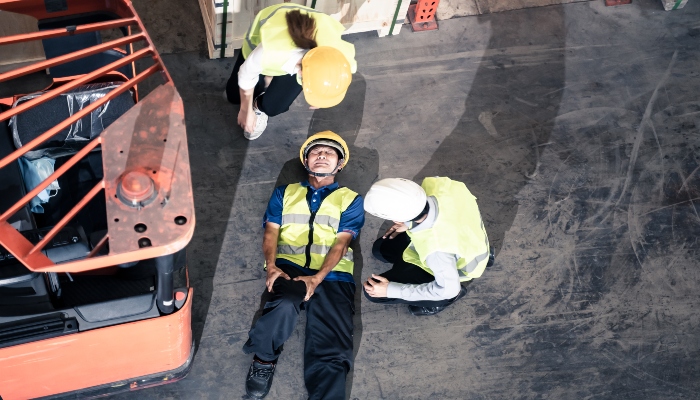One of the leading causes of injuries in the workplace are slips, trips, and falls according to the Occupational and Safety Hazard Administration (OSHA). These kinds of accidents may cause a range of injuries such as fractures, sprains, head injuries, and even death.
These potentially severe injuries won’t only cause loss of productivity, but may also expose health code violations. Workers who experience an accident may have to take a leave in order to recover from their injuries. This can demotivate other employees and lead them to lose trust in leadership – especially if the accident was preventable through proactive activities such as regular checks and immediate action of inspection findings. Lawsuits and fines and penalties for safety violations can also be costly results of workplace accidents.
Therefore, organizations should make reducing slips and falls a priority if they don’t want to suffer other consequences such as loss of productivity, costly non-compliance fines, and lost trust. Inspection software like The Checker can be used to help reduce slips and falls in the workplace in several ways:
Identifying Hazards: Inspection Software can be customized or tailored to address a work environment’s high-risk areas for slips and falls, such as areas prone to wet surfaces or clutter as well as areas known for having uneven surfaces.
Tracking Inspections: You can make sure that all required inspections are being performed on a consistent basis and follow the progress of each inspection with inspection software. This can aid in the detection and elimination of potential threats in a timely manner.
Providing Real-Time Feedback: During inspections, personnel can receive real-time feedback from inspection software that highlights potential dangers and prompts them to take preventative measures.
Generating Reports: Reports generated by inspection software can be used to spot patterns and trends along with gaps within processes and programs that may point to potentially serious safety hazards.
Best Practices for Preventing Slips and Falls in the Workplace
Here are The Checker’s recommendations on best practices for preventing slips and falls in the workplace.
Keep Work Areas Clean and Well-Organized: Clutter, such as garbage and debris, can create tripping hazards – especially those that block pathways and other high-traffic areas.
Use Caution Signs and Barriers: Utilize warning signs and physical barriers to warn workers of potential dangers and reduce the likelihood of accidents. These caution signs and barriers should describe the hazard such as “slippery when wet” or “uneven floor.”
Use Non-Slip Flooring and Mats: It is important to use non-slip flooring and mats in locations where there is a high danger of slips and falls due to wet or slick floors - especially in areas that are likely to get wet, such as kitchens and bathrooms.
Wear Appropriate Footwear: Shoes with non-slip soles are a good choice for preventing slips and falls since they provide traction and keep the wearer's feet firmly planted on the ground.
Use Handrails and Grab Bars: When a person becomes unstable, their instinct is to grab something that will help keep them upright. Install handrails and grab bars in appropriate areas.
Provide Training: Offering instruction on how to avoid slips and falls in the workplace can help employees recognize potential hazards, practice caution, and stay alert in high-risk areas.
Ultimately, being proactive in the workplace and always working to identify and resolve potential risks is essential in reducing the number of slips, trips, and falls that occur there. The likelihood of slips, trips, and falls occurring in the workplace can be greatly reduced if businesses adopt these best practices and put in place the necessary safeguards, training, and tools.











